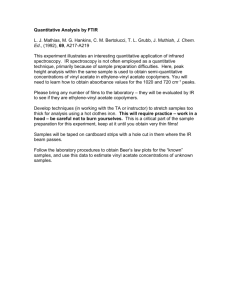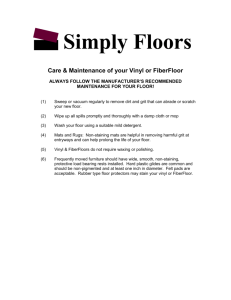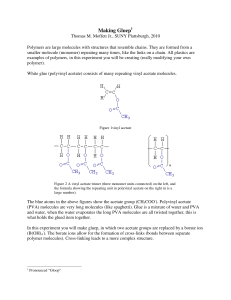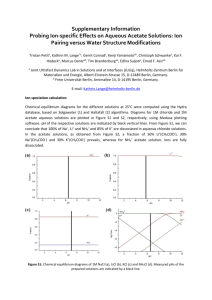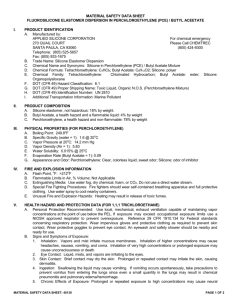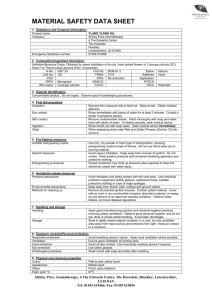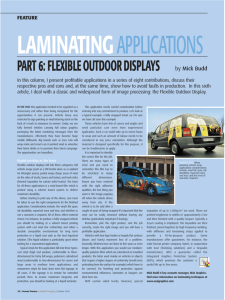Super Flex MSDS Sheet
advertisement
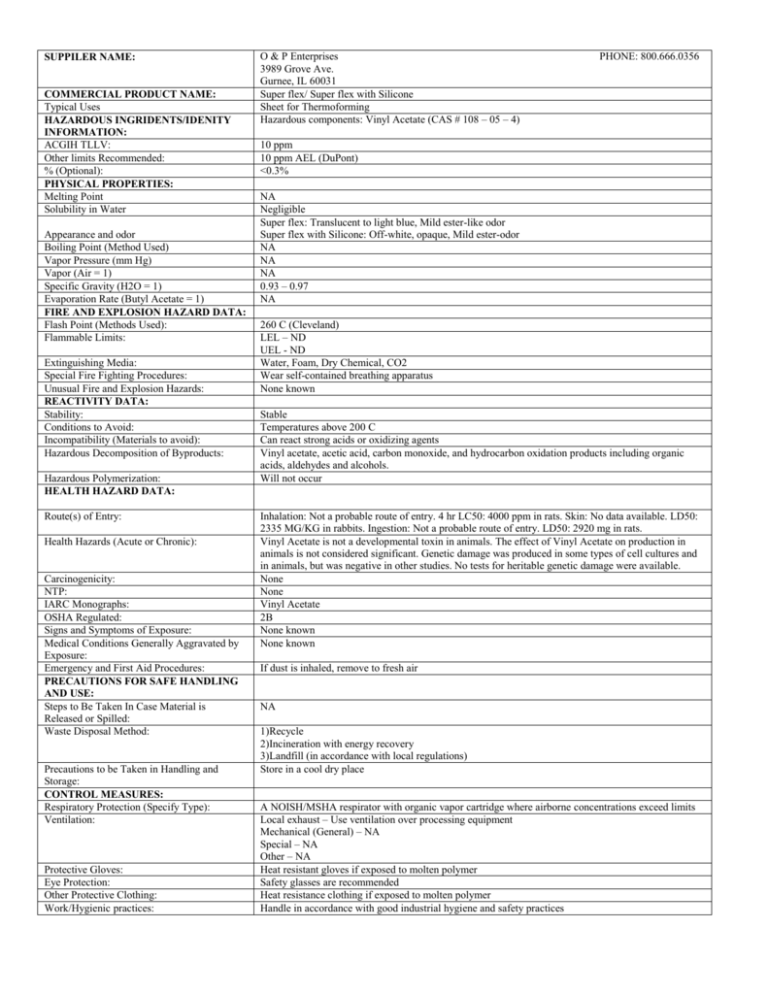
SUPPILER NAME: COMMERCIAL PRODUCT NAME: Typical Uses HAZARDOUS INGRIDENTS/IDENITY INFORMATION: ACGIH TLLV: Other limits Recommended: % (Optional): PHYSICAL PROPERTIES: Melting Point Solubility in Water Appearance and odor Boiling Point (Method Used) Vapor Pressure (mm Hg) Vapor (Air = 1) Specific Gravity (H2O = 1) Evaporation Rate (Butyl Acetate = 1) FIRE AND EXPLOSION HAZARD DATA: Flash Point (Methods Used): Flammable Limits: Extinguishing Media: Special Fire Fighting Procedures: Unusual Fire and Explosion Hazards: REACTIVITY DATA: Stability: Conditions to Avoid: Incompatibility (Materials to avoid): Hazardous Decomposition of Byproducts: Hazardous Polymerization: HEALTH HAZARD DATA: Route(s) of Entry: Health Hazards (Acute or Chronic): Carcinogenicity: NTP: IARC Monographs: OSHA Regulated: Signs and Symptoms of Exposure: Medical Conditions Generally Aggravated by Exposure: Emergency and First Aid Procedures: PRECAUTIONS FOR SAFE HANDLING AND USE: Steps to Be Taken In Case Material is Released or Spilled: Waste Disposal Method: Precautions to be Taken in Handling and Storage: CONTROL MEASURES: Respiratory Protection (Specify Type): Ventilation: Protective Gloves: Eye Protection: Other Protective Clothing: Work/Hygienic practices: O & P Enterprises 3989 Grove Ave. Gurnee, IL 60031 Super flex/ Super flex with Silicone Sheet for Thermoforming Hazardous components: Vinyl Acetate (CAS # 108 – 05 – 4) PHONE: 800.666.0356 10 ppm 10 ppm AEL (DuPont) <0.3% NA Negligible Super flex: Translucent to light blue, Mild ester-like odor Super flex with Silicone: Off-white, opaque, Mild ester-odor NA NA NA 0.93 – 0.97 NA 260 C (Cleveland) LEL – ND UEL - ND Water, Foam, Dry Chemical, CO2 Wear self-contained breathing apparatus None known Stable Temperatures above 200 C Can react strong acids or oxidizing agents Vinyl acetate, acetic acid, carbon monoxide, and hydrocarbon oxidation products including organic acids, aldehydes and alcohols. Will not occur Inhalation: Not a probable route of entry. 4 hr LC50: 4000 ppm in rats. Skin: No data available. LD50: 2335 MG/KG in rabbits. Ingestion: Not a probable route of entry. LD50: 2920 mg in rats. Vinyl Acetate is not a developmental toxin in animals. The effect of Vinyl Acetate on production in animals is not considered significant. Genetic damage was produced in some types of cell cultures and in animals, but was negative in other studies. No tests for heritable genetic damage were available. None None Vinyl Acetate 2B None known None known If dust is inhaled, remove to fresh air NA 1)Recycle 2)Incineration with energy recovery 3)Landfill (in accordance with local regulations) Store in a cool dry place A NOISH/MSHA respirator with organic vapor cartridge where airborne concentrations exceed limits Local exhaust – Use ventilation over processing equipment Mechanical (General) – NA Special – NA Other – NA Heat resistant gloves if exposed to molten polymer Safety glasses are recommended Heat resistance clothing if exposed to molten polymer Handle in accordance with good industrial hygiene and safety practices
